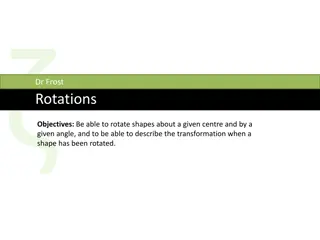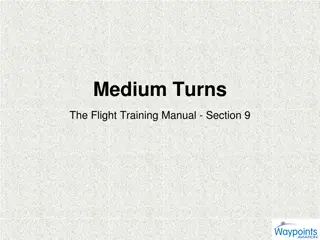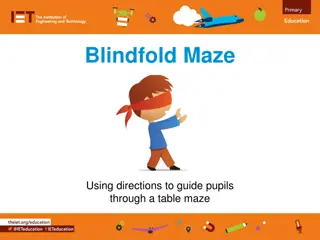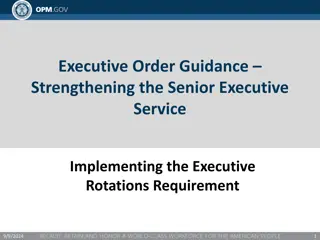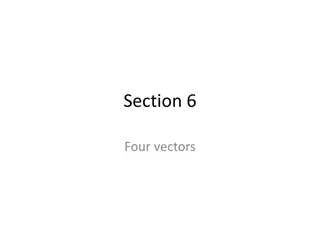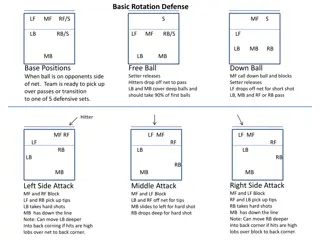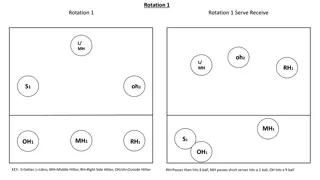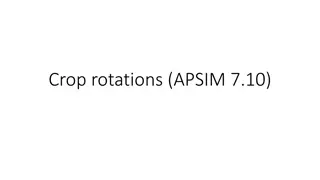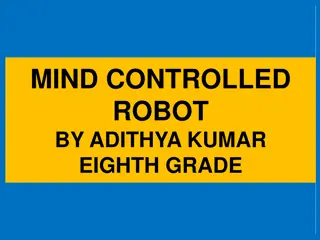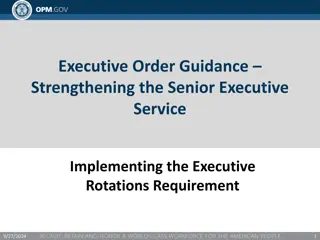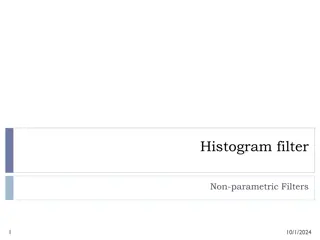Understanding Robot Turns: Calculating Rotations Simplified
Explore the concepts of pivot turns and point turns for robots, learn how to calculate rotations effectively through equations, and understand the relationships between the two types of turns. Discover the essential techniques for handling different types of turns in robotics with ease.
Download Presentation

Please find below an Image/Link to download the presentation.
The content on the website is provided AS IS for your information and personal use only. It may not be sold, licensed, or shared on other websites without obtaining consent from the author. Download presentation by click this link. If you encounter any issues during the download, it is possible that the publisher has removed the file from their server.
E N D
Presentation Transcript
Overview Two Types of Turns Calculating Rotations for Pivot Turns Equation for Calculating Pivot Turns Calculating Rotations for Point Turns Equation for Calculating Point Turns Relationships Between the Two Types of Turns Parting Thoughts
Two Types of Turns Pivot Turn robot turns about a central point located at one of the wheels One wheel goes forward, or reverse, while the other does not rotate Left wheel forward is a right turn and vice versa Left wheel reverse is a left turn and vice versa
Two Types of Turns Point Turn robot turns about a central point located midway between the wheels One wheel goes forward while the other goes in reverse Left wheel forward, right wheel reverse is a right turn Right wheel forward, left wheel reverse is a left turn
Calculating Rotations for Pivot Turns In this example we want a 180 right pivot turn - Left wheel forward, right wheel stationary - The left wheel will follow the blue circular path - The diameter of this path = 2 times the width from wheel center to wheel center, or track width Track width - The circumference of a full circular path is: circumference = x 2 x track width - Since we are travelling only 180 (half) of the 360 that make up a circle, we multiply the circumference by 180 /360 (1/2) to get the length of the path the robot will travel - The last step is to divide by the circumference of the wheel to get the rotations needed
Equation for Calculating Pivot Turns For an n degree pivot turn 2 ?? ? ?? ??? = ? 360 Where Rot = rotations n = degree of turn ?? = track width ?? = circumference of wheel
Calculating Rotations for Point Turns In this example we want a 180 right point turn - Left wheel forward, right wheel reverse - The left wheel will follow the blue circular path, the right wheel will follow the red circular path Track width - The diameter of this path = the width from wheel center to wheel center, or track width - The circumference of a full circular path is: circumference = x track width - Since we are travelling only 180 (half) of the 360 that make up a circle, we multiply the circumference by 180 /360 (1/2) to get the length of the path the robot will travel - The last step is to divide by the circumference of the wheel to get the rotations needed
Equation for Calculating Pivot Turns For an n degree pivot turn ?? ? ?? ??? = ? 360 Where Rot = rotations n = degree of turn ?? = track width ?? = circumference of wheel
Relationships Between the Two Types of Turns Pivot Turns Need twice as many rotations as a point turn Need more space More forgiving* of errors Point Turns Need half as many rotations as a pivot turn Need less space Less forgiving* of errors *Forgiving meaning that an error in calculation is a smaller percentage of the total rotations needed
Parting Thoughts The process used for finding the path is the same process used to find the arc length of a circle in geometry, we just divide the arc length by the wheel circumference to find wheel rotations. The pivot turn does twice as many rotations as a point turn because only one wheel is doing the turning. In a point turn both wheels are turning so they each turn only half as many rotations as a pivot turn to turn the robot the same number of degrees.



